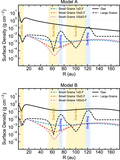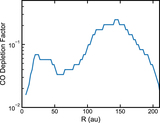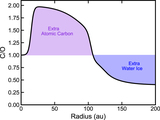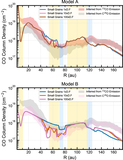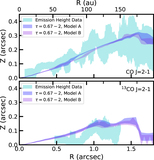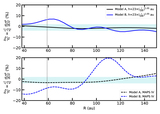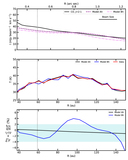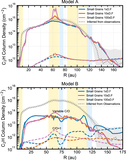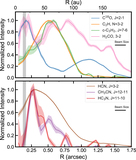Image Details
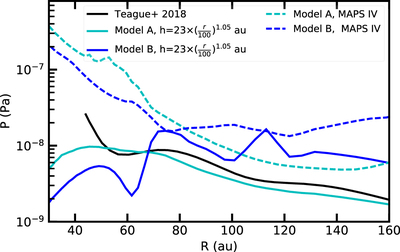
Caption: Figure 6.
Thermal pressure profile cuts in our two models compared to the profile from Teague et al. (2018) inferred from AS 209 disk kinematics using CO line emission. The other cut was taken following the parametric emission surface of CO inferred by Law et al. (2021b). When the gas is depleted by roughly an order of magnitude, as in Model B, the pressure profile shows significant variations with the radius, these are inconsistent with those from Teague et al. (2018). The lack of strong fluctuations in the observed pressure profile disfavors the presence of a deep gas gap, at least at ∼59 au, breaking the degeneracy between chemical processing and gas depletion. Thus, chemical processing is the dominant mechanism for CO column variations in AS 209.
Copyright and Terms & Conditions
© 2021. The American Astronomical Society. All rights reserved.


